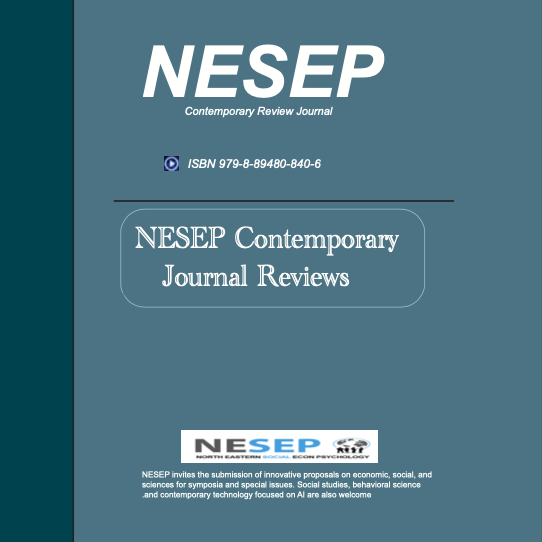Accepted Articles
We congratulate you on acceptance of your manuscript.

Annual Expo by the Journal of Young Explorers Meta and NESEP
- Fundamental or applied research
- Interdisciplinary research
- Judging on a rolling basis
- A work-in-progress research
- Completed research
- Unlimited topics and ideas
- ISBN 979-8-89480-840-6
- NESEP/NY-CSEF event at Harvard Club in NYC
Study of Heritage and Market Forces via Business Ventures of Taiwan’s Indigenous Peoples
Abstract
The Indigenous peoples of Taiwan maintained their valuable cultural and ecological understanding before colonial and post-colonial authorities started their systematic efforts to exclude them through land theft and enforced cultural assimilation and economic limitations during the last hundred years. This research paper demonstrates that successful business expansion occurs through reliable cooperative systems, enhanced infrastructure, and robust intellectual property protection, as these factors help communities reach economic self-sufficiency through value-driven development. It focuses on the Indigenous peoples who launched their business operations after enduring for years colonial-era land confiscation and forced assimilation policies that marginalized them.
By demonstrating through policy evaluation techniques and industry-specific case studies, the paper examines the Indigenous Peoples Basic Act (2005) together with funding from the Council of Indigenous Peoples (CIP) to understand their functions and effects. Thereby, it is possible to understand how state-backed initiatives promote Indigenous development and their resulting impact. The study focuses on three main sectors, which include cultural tourism at the Amis Harvest Festival, handicraft production that merges traditional indigenous methods with modern designs, and specialty farming that cultivates heritage crops such as millet. The business initiatives show promise but encounter multiple obstacles because they operate from remote locations and face competition from fake mass-produced goods, insufficient intellectual property protection, and youth migration to other regions.
The business initiatives by the Indigenous peoples show promise but have encountered multiple obstacles. This includes remote locations, fake mass-produced products, insufficient protection of intellectual property, and youth migration to other areas. The presented paper shows sustainable development requires Indigenous peoples to establish their governance systems and regain economic control while safeguarding their cultural heritage for upcoming generations.
Reference
-
Cheng, T. M., Wu, H. C., & Chen, Y. C. (2023). A cross-level analysis of Indigenous tourism of Tsou in Taiwan. Tourism Studies, 33(2), 145–166.
-
Choi, C. (2024, October 24). Empowering Indigenous farmers in Taiwan: How the Tribal E-Shop is reviving local knowledge and ecology. Organic Without Boundaries.
-
Creative Expo Taiwan. (2025). Creative Expo Taiwan. Taiwan Design Research Institute / Ministry of Culture.
-
FFTC. (2024). Promoting local agritourism: A case study of Indigenous Taiwan. Food and Fertilizer Technology Center Journal, 38(1), 55–70.
-
Hsieh, S. C. (2015). Ethnic identity and social mobility among Taiwan’s Indigenous peoples. Asian Ethnicity, 16(3), 351–370.
-
IWGIA. (2022). The Indigenous World 2022: Taiwan. Copenhagen: International Work Group for Indigenous Affairs.
-
Life of Taiwan. (2023). Private tours with an Indigenous twist. Retrieved from https://lifeoftaiwan.com
-
Satoyama Initiative. (2022). Sustainable development of Taiwanese Indigenous tribes in accordance with Seediq tradition. Retrieved from https://satoyama-initiative.org
-
Simon, S. (2006). Paths to autonomy: Aboriginality and the nation in Taiwan. Social Analysis, 50(3), 1–27.
-
Skilling Indigenous Futures. (2024). Crafts and resilience among Taiwan’s Indigenous peoples. Journal of Indigenous Studies, 12(1), 77–94.
-
WITS. (2024). World Indigenous Tourism Summit: Proceedings from Taipei. WITS Journal, 7(1), 1–20.
-
Yeh, J. H., Chiang, Y. C., & Lin, P. Y. (2021). Taiwanese Indigenous cultural heritage and revitalization: Policies and practices. Heritage, 4(2), 567–585.